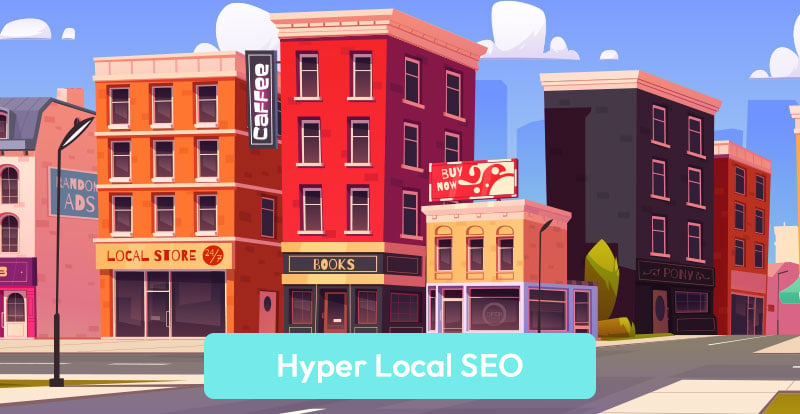Search engine optimization isn’t a secret anymore, it’s a necessity, even for brick-and-mortar stores trying to reach their neighborhood instead of an entire state or country. Just a big billboard isn’t going to cut it anymore. Neighborhood searches can be just as competitive as global searches. You need to utilize every advantage if you’re going to hit the top of those searches, and I’ve got the info to get you there.
Your Google Business Profile is just as valuable as your storefront. It has to be inviting, enticing, and feature the right language to reach those desired customers. People like knowing the business they’re going to patronize and Google loves the details.
To make sure they find your business, it takes planning and strategizing.
I’ve written about how valuable customer reviews are for businesses, but they can only do so much. Your business deserves to reach its customers, so that’s why I’ve put together this list of tactics that won’t just get you seen, they’ll move the needle. First, we’ll break down the basics before I dive into the expert-only SEO tactics that boost brands, sales, and entire businesses.
SEO Basics for Businesses
Google Business Profile
Your GBP is worth its weight in gold. Google has made it incredibly easy for any business owner to optimize and operate their pages, they just have to claim them! Don’t let customers be the ones to fill out your NAP (name, address, and phone number) because they could get it wrong.
Only you know your exact business hours, so claim the page, verify it, and ensure it answers every possible question a customer has about your business.
Local Citations and Directories
There’s a good chance an online journal or directory is talking about your business. Tons of local pages talk about the businesses in their neighborhood, known as local citations. Find the directories that mention your business and submit your information to them.
If they’re not talking about your business, submit your business and make sure you’re seen on those directories.
On-Page Optimization
Search engines grab information from any part of a website or business profile, so make sure your title tags, descriptions, and headings are using the keywords your customers are using in their searches. Every page should have a meta description that appears on search results; every heading should use the most popular keywords of the industry your business is in.
Reviews and Reputation
It’s okay to ask for reviews because your business needs them. Not only do they establish credibility, but they let potential customers know what the general public thinks of your services and overall business.
Ask customers for them and respond to the ones you receive, even the negative reviews. It shows that you care about your reputation and are always willing to improve.
Simple enough, right? That’s not all, though. These are just surface-level strategies to boost basic online profiles. To help you hit the top of those search results, we’re going to have to dig a little deeper.
Advanced Tactic #1: Hyper-Local Scheme Markup
What
Search engines don’t find your business by themselves, that’s why local business schema can be a huge boost.
It ensures that any time someone sees your business mentioned, they see the information they need to know like where you’re located and how they can contact you. If your business services more than one area, utilize the Search Area Business schema to get that information out there.
Why
Google needs to be able to discern details about your business, including your service areas. For multi-location businesses, this is a must to ensure Google gets the data it needs to define everything about your business.
So at first, this could sound difficult. How are you going to define how Google categorizes your business? It’s not exactly difficult.
Pro-Tip
All it takes is a little data linking through JSON-LD. That way almost all of the data referring to your business is encoded with additional “context” that provides more information to Google.
Advanced Tactic #2: Smart Geo-Targeted Content Siloing
What
Just because a neighborhood is tightly-knit doesn’t mean Google sees it that way. That’s why many people are creating their own “content silos” that effectively tie the entire neighborhood together with a Local SEO Hub-string. That means that if content about a specific neighborhood isn’t pointing back to your business, you can simply create the kind of content that does.
How
Blog or article content about your neighborhood doesn’t always have to revolve around your business. With your website acting as that local SEO hub, crafting content like “Where to go in X neighborhood” provides worthwhile content and information about your business. It also points right back to your website as that central “hub”.
Sometimes, that could mean creating entirely different forms of content that internally link back to your central hub, aka your website.
Why
Search engines are getting smarter, including Google’s stricter interpretations of spam. Crafting content that genuinely provides advice or guides not only boosts visibility for your business but also boosts relevance for the entire neighborhood or region that the post discusses.
That’s good for Google and it’s great for your business.
Advanced Tactic #3: Q&A Strategy on Google Business Profile
What
Your Google Business Profile has plenty of sections, and that includes one for Q&A. Customers need information, and the basic description you added might not cut it. This allows them to pose questions to a business without having to directly contact it.
It also presents business owners with new opportunities. If the Q&A section leaves something to be desired, create the content yourself. Ask what you think will be commonly asked hyper-local questions that will effectively do the user’s work for them.
“Does your business design e-commerce sites for Philadelphia businesses?” is a question that’s relevant to our own website at The 215 Guys. Similar questions tailored for your business can be extremely beneficial to both you and potential customers.
Why
You’re an authority in your industry or region, so make sure users know that. Creating these hyper-local questions not only establishes that authority, but it adds relevant keywords to your profile, which ensures that content appears on Google’s search results.
Pro-Tip
What’s even better is using genuine customer inquiries as a way to interact with your customers. When a question you know will benefit your business hasn’t been asked yet, simply ask it yourself anonymously to make sure it appears as authentic as possible.
Advanced Tactic #4: Location-Based Image Optimization and Geo-Tagging
What
Images can have their own form of metadata. For every web page, Google typically utilizes a meta description to inform users about that web page. The same goes for images.
When uploading images, they often contain EXIF (Exchangeable Image File Format) data like camera specs, date and time the image was taken, and various other information about the technical details related to that image. By embedding geo-coordinates into that EXIF data before images are uploaded, many experts believe Google will use that extra context.
Why
Ignoring various AI advancements, if Google doesn’t get anything but keywords and regular EXIF data when an image is uploaded, it won’t add further categorization to that image. When adding geo-coordinates to an image, it could give Google even more context to pull from when generating search results.
Pro-Tip
Your neighborhood likely has more identifying details than just your business. Upload images of actual landmarks, projects, artwork, or anything of note with the included geo-coordinates to generate more traffic to those neighborhood uploads.
Advanced Tactic #5: Dynamic Call Tracking & Phone Number Rotation
What
Call tracking tools like CallRail and WildJar don’t just tell you what area code is calling, they can give you deep insight into a customer’s journey and how they found your business. It’s important to know how users find you. It can tell you what markets are interested and which audiences to reach out to, especially for location-specific pages.
Why
Different neighborhoods have different tastes, and as a business owner, you need to know which neighborhoods are driving the most calls to your business. It allows you to preserve your local presence and it keeps you apprised of which areas are paying the most attention to your marketing.
That being said, to make sure you’re maintaining that presence in your neighborhood, only use dynamic numbers on digital channels. That way your local number is the one users see when they click on your Google Business Profile.
Advanced Tactic #6: Building Ultra-Localized Backlinks
What
Some influencers tend to go overboard, leading to a general dislike from most social media users. But some influencers are genuinely offering advice or recommendations about their towns and cities, and those are the influencers that deserve your business's attention.
Find influencers who live or work in your area and build a partnership. You could sponsor events that they host, bringing together their audience and outreach skills with your business acumen. Then, reach out to local media to create some genuine backlinking opportunities that don’t just mention your business but also link back to it.
Why
Not only is it a great advertising opportunity, but robust backlinks that are hyper-local will significantly impact Google’s local rankings. Getting more attention and, potentially, more future customers.
Sponsor a local clean-up that promotes your business and has a positive effect on your community; create guest posts on community pages, blogs, or newsletters. Community outreach from your business will lead to that community reaching for your business.
Advanced Tactic #7: GA4 & Localized User Behavior Analysis
What
Google has a wide array of tools to help businesses like yours, and that includes Google Analytics 4. It collects data on almost every aspect of user behavior when they visit your website, including the user’s location, device, clicks, and time spent on your pages.
Why
Targeted marketing should play a key role in any marketing spending. Google Analytics 4 helps businesses to determine where that money needs to be spent. If users in a specific neighborhood are using their iPhones to find you, you can shape future marketing content to reach those specific users.
Key Action
Now that you’ve got insight into how and where users are finding you, set up custom segments or audiences based on their actions or locations. Local landing pages will even track data and behavior to give you more info to work with.
Advanced Tactic #8: Showcasing Neighborhood Results & Client Locations
What
Content relevant to specific neighborhoods can absolutely benefit businesses within that neighborhood. Link to neighborhood-centric pages, portfolios, or even case studies that can give users valuable information about the area.
Where
Client lists can be a form of marketing in and of themselves. Users are much more likely to patronize a business that they perceive to be a key member of their personal community, especially when that business works with other local businesses.
Create a Neighborhood Client List page that identifies who you’ve helped in your community. For instance, we have our own Local Client Portfolio to showcase the Philly businesses we’ve built websites for. Local success stories are a great way to demonstrate your business is a valuable member of your community.
Why
Not only does this show hyper-local expertise about your community, but it builds trust with potential clients and shows users that you’re an active participant in your community.
Google has an entire metaphorical garage of tools and machines for businesses to use. They can boost visibility, build trust within communities, and help your business stand out in increasingly competitive markets and search results.
These local SEO secrets are specialized tools that can be as valuable as actual leads, but it’s up to you and your business to use them correctly.




